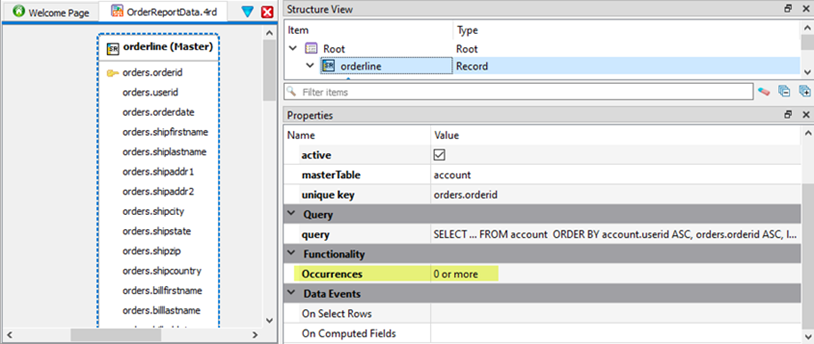Set occurrences for a record
You can define how many rows are printed for each record in your report.
The Occurrences property is available only in business records for reports (.4rd files), not for forms (.4fd* files) or web services (.4ws or .4wsj files).
.4rd file.
In order for this property to affect the printing of lines, the rows must be ordered. Go to Order records in the Business Records diagram.
| Option | Description |
|---|---|
| 1 |
The record prints, and only the first row of data is shown. All other rows are ignored. If there are no rows, the report still prints one row. By default, this row will be empty. You can add default values for a row using the OnComputeFields code event. To create this event, select the
OnComputeFields() property for the record. In the event function, you must check
whether the row has data:
<POINT> tag of the OnComputeFields() function in the
.4rd file. |
| 0 or 1 |
The record prints, and only the first row of data is shown. All other rows are ignored. If no rows are fetched, nothing is printed for the record. |
| 0 or more |
The record prints, and all rows of data are shown, whether there is one row or many. If no rows are fetched, nothing is printed for the record. |
| 1 or more |
The record prints, and all rows of data are shown, whether there is one row or many. If there are no rows, the report still prints one row. By default, this row will be empty. You can add default values for a row using the OnComputeFields code event. To create this event, select the
OnComputeFields() property for the record. In the event function, you must check
whether the row has data:
<POINT> tag of the OnComputeFields() function in the
.4rd file. |